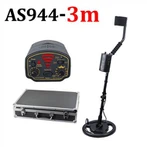For gas detectors, what is the difference between testing and calibrating?
After using the gas detector for a period of time, it is susceptible to the influence of the operating environment and the gas sensor of the instrument itself, which may lead to significant deviations in the measured results. Therefore, in order to ensure the accuracy of measurement results, regardless of the type of gas sensor used, gas detectors need to be regularly tested. If the deviation of the test results exceeds the normal range, the gas detector needs to be recalibrated. Many friends often confuse testing and calibration, so what is the difference between gas detector testing and calibration?
(1) Testing refers to using a gas detector to detect gases of known concentrations, in order to determine whether the results detected by the instrument are within an acceptable range. If they exceed the allowable range, the instrument needs to be recalibrated.
(2) Calibration refers to adjusting the results of a gas detector with a known concentration of gas to match the known concentration of the gas.
Frequency of gas detector testing and calibration:
(1) If conditions permit, gas detectors should be tested once a day before use;
(2) For gas detectors that fail the test, they must be calibrated before use;
(3) If the tested environment may have an impact on the performance of the gas detector, testing should be conducted at any time.
If the conditions do not allow daily calibration confirmation, the gas detector can reduce the calibration frequency if the following conditions are met:
(1) At least 10 days of testing were conducted on specific occasions, and daily testing results confirmed that the gas detector was not affected by certain gases in the environment, resulting in gas sensor poisoning.
(2) If it is determined after testing that the gas detector does not require calibration, the calibration interval can be extended, but the maximum cannot exceed 30 days.
(3) The calibration history of the instrument should be managed by a dedicated person or have detailed tracking and usage record data files.






